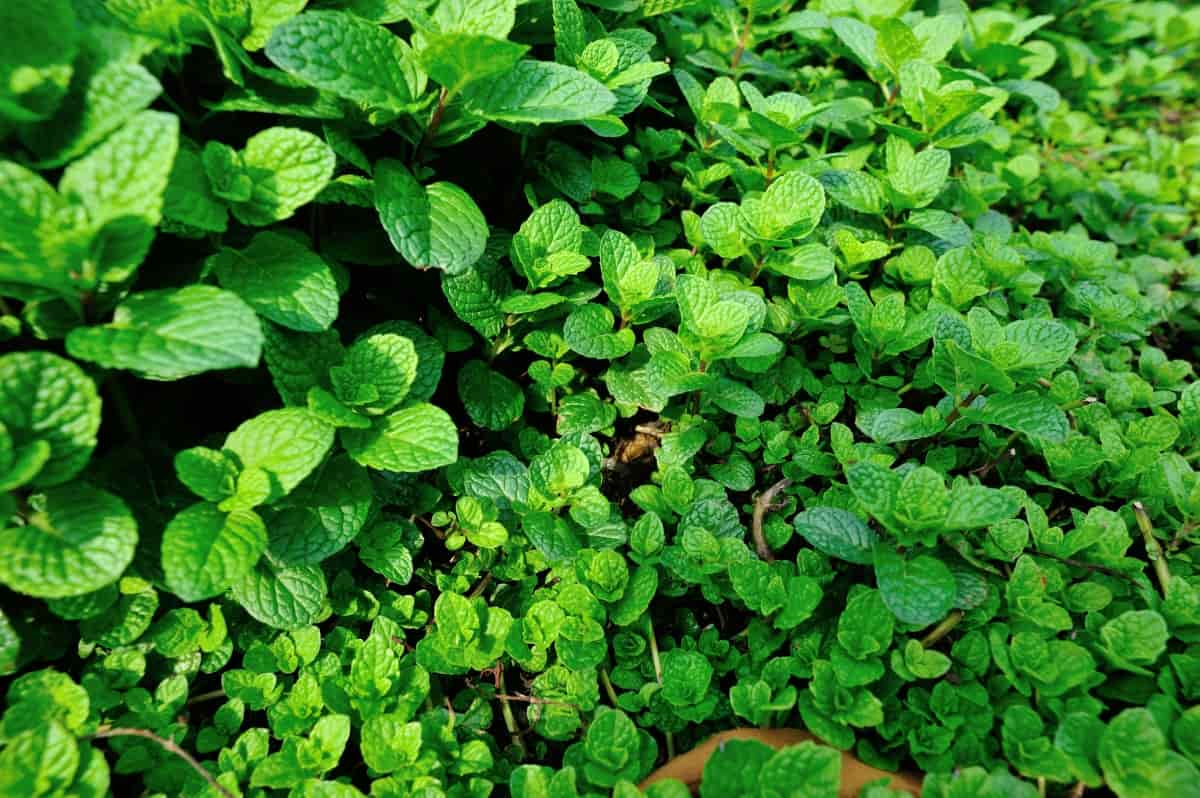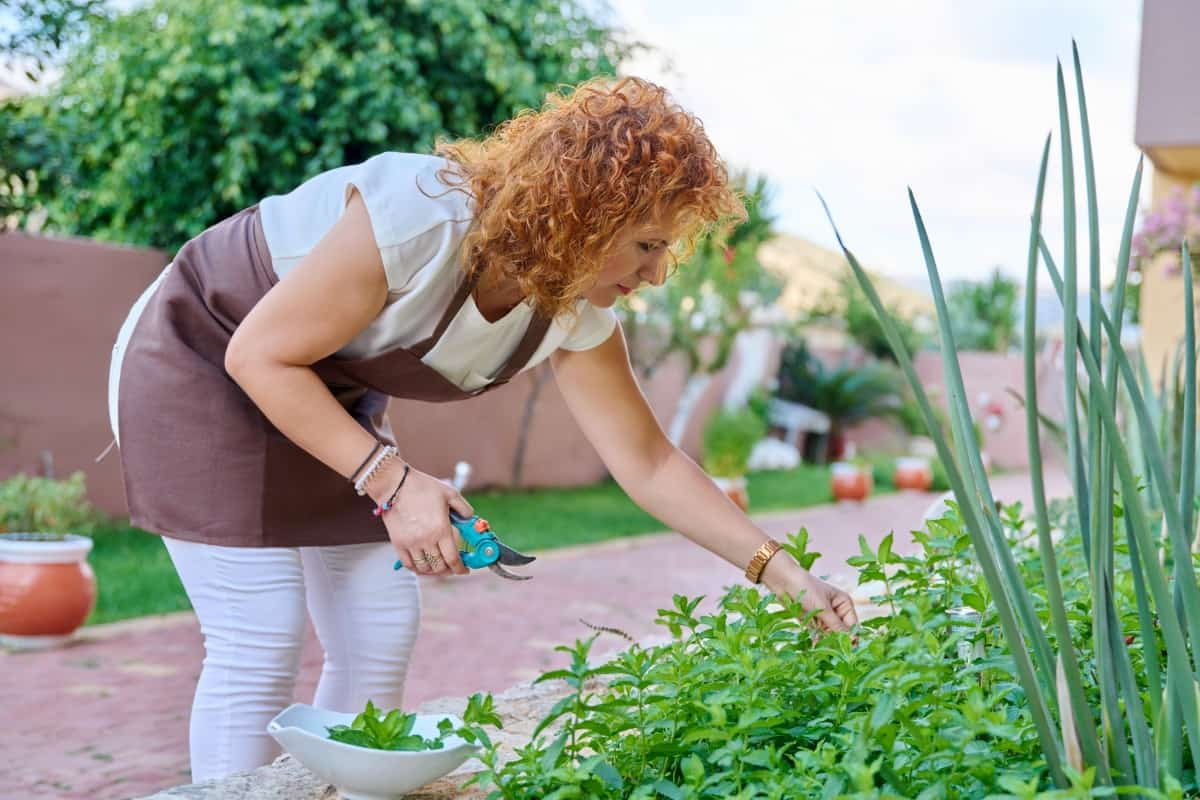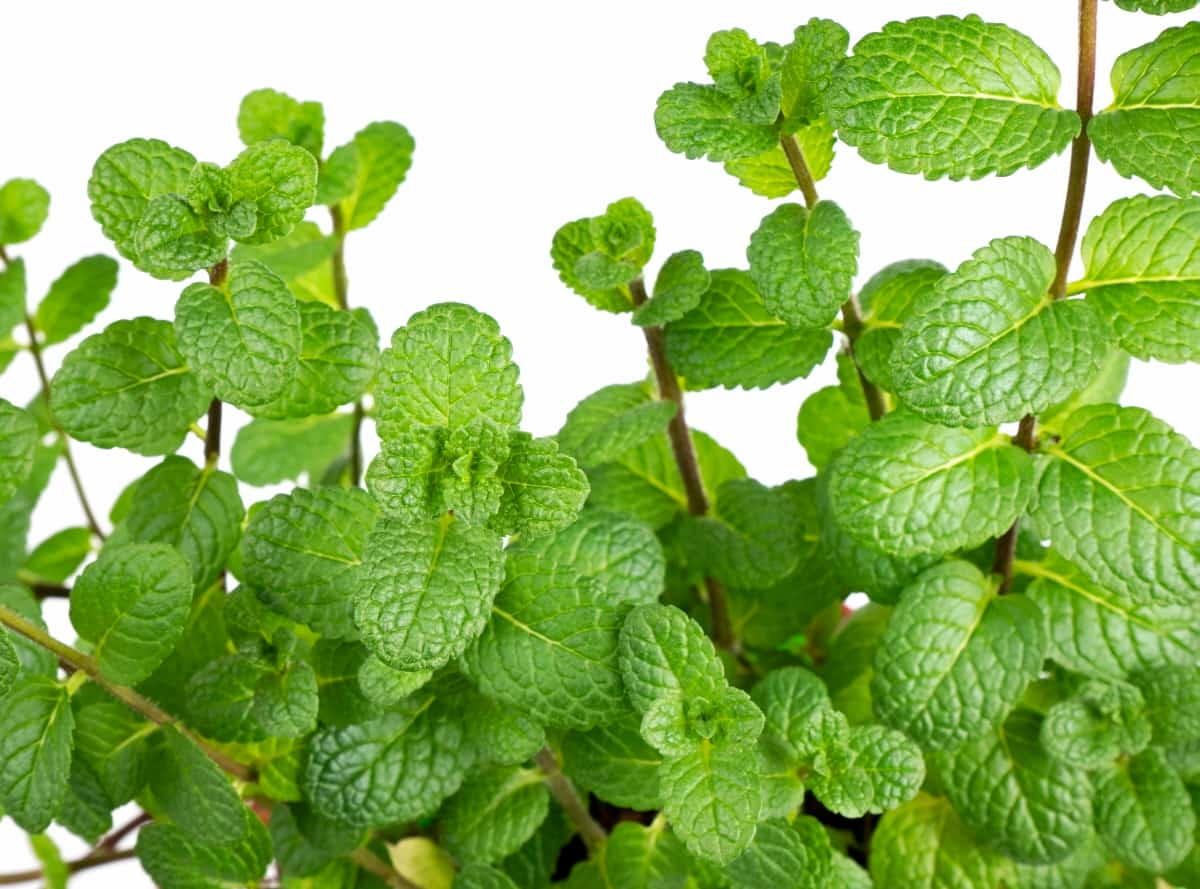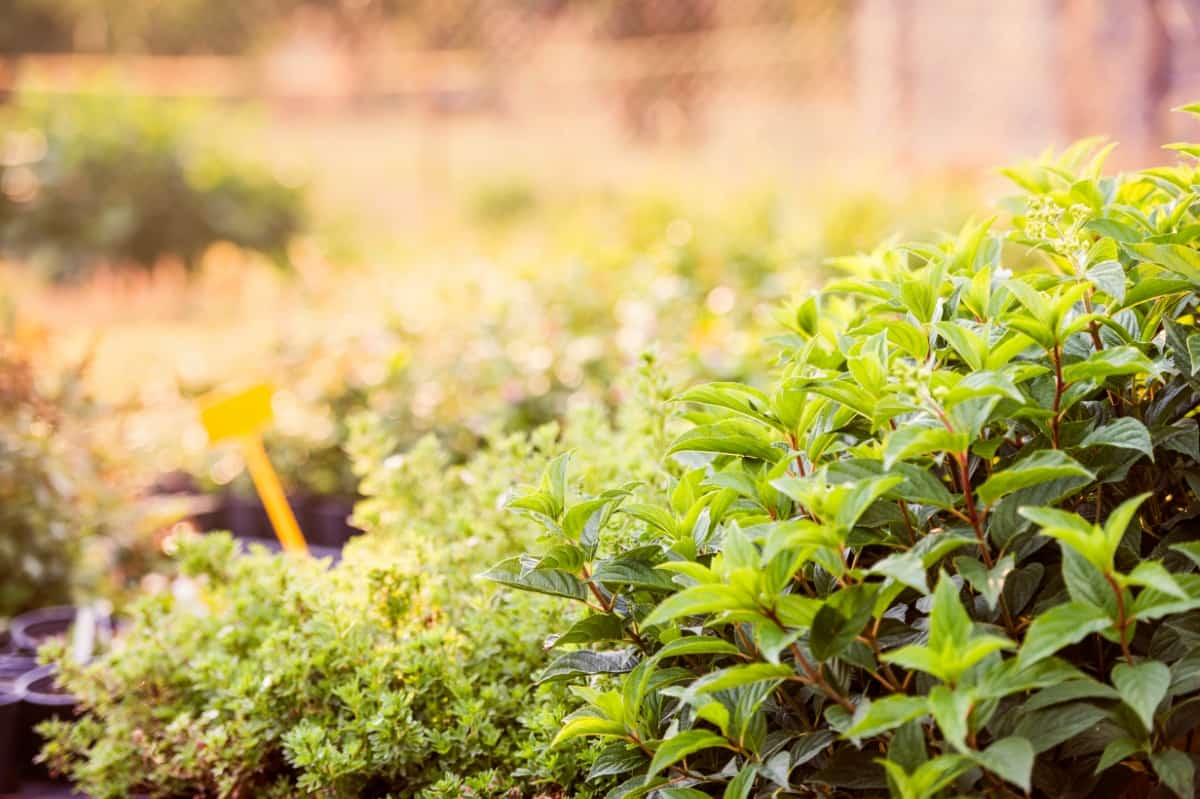Companion planting is when you grow multiple plants together to enhance growth and yield through mutual benefits. The idea behind this method is that some plants can help each other grow better, deter pests, and improve the soil’s fertility. Mint companion plants’ benefits are immense, making them a popular herb for companion planting. In the world of herbs, mint holds a special place.

Its refreshing aroma not only lends a delightful scent to the garden but also provides many uses in the kitchen and natural remedies. However, mint can be somewhat invasive in the garden. It propagates rapidly, often taking over large areas. Knowing what grows well with mint and what you should not plant next to mint can help gardeners maintain a healthy, productive garden. So, without further ado, let’s dive into the fascinating world of mint companion planting.
Benefits of Companion Plants for Mints in the Garden
Companion plants for mint offer a range of advantages to gardeners. The main benefit is enhanced growth and yield. Certain plants, when grown alongside mint, help it flourish. This is particularly useful for gardeners who wish to harvest mint leaves for culinary or medicinal use. Companion planting also helps control mint’s spread, as some plants can act as a natural barrier, preventing mint from invading the rest of the garden. Additionally, certain companion plants can help improve the flavor of mint leaves, adding an extra dimension to their use in cooking and beverages.
Best Companion Plants for Mints to Deter Pests
One of the major benefits of mint companion plants is their ability to deter pests. Certain plants emit strong scents or have unappealing properties to common garden pests. These plants can be used as a form of biological pest control, reducing the need for chemical pesticides. Some of the best companion plants for mint to deter pests include tomatoes, cabbage, and broccoli. These plants are known to repel various pests that are known to target mints, such as aphids, caterpillars, and flea beetles. Conversely, mint can help deter pests from these plants, acting as a two-way pest deterrent.
Mint Companion Plants for Improved Pollination
Pollination is a critical factor in a plant’s ability to produce fruit or seeds. Companion planting can enhance pollination by attracting beneficial insects to the garden. When grown next to mint, certain plants can bring in pollinators like bees, butterflies, and other beneficial insects. This leads to improved pollination and, consequently, better fruit and seed production. Plants like lavender, marigold, and daisies not only make the garden look vibrant and beautiful but also attract a host of pollinators, enhancing the overall productivity of the garden.
Companion Plants for Mint in Containers
Mint grows exceptionally well in containers, making it an excellent choice for small-space gardening. However, just like in the ground, mint can easily overtake other plants in a container. Hence, choosing the right companion plants for mint in containers is crucial. Companion herbs for mints in organic gardening, such as parsley, basil, and thyme, are great choices. These herbs are compact, grow at a pace like mint, and require similar care and growing conditions.
In case you missed it: Frequently Asked Questions About Mint Farming

Companion Herbs for Mint in Organic Gardening
Organic gardening takes a holistic approach to growing plants, considering the overall health of the entire garden ecosystem. Regarding mint, companion herbs play a crucial role in organic gardening. Companion herbs for mints not only aid in pest control but also help enhance the growth and yield of mint. Examples of such herbs include basil, thyme, and parsley. With its robust flavor and scent, Basil works well with mint, as it helps deter pests like mosquitoes and flies.
Thyme, on the other hand, attracts pollinators and is compatible with mint’s growing conditions. Lastly, parsley, a versatile herb, grows well with mint, and both can be harvested together for various culinary uses. When grown alongside mint, these herbs contribute significantly to an organic and sustainable gardening system.
Flowering Companion Plants for Mints to Attract Beneficial Insects
Flowering plants add beauty to any garden but do more than just please the eye. Many flowering plants can be great companion plants for mint as they attract beneficial insects. Plants like marigolds, nasturtiums, and calendula attract pollinators and lure away harmful pests. They serve as biological control, reducing the need for chemical insecticides and promoting a healthy garden ecosystem.
Companion Vegetables for Mints in Raised Beds
Raised beds are popular among gardeners as they provide excellent drainage, prevent soil compaction, and can be filled with the ideal soil mix. Certain companion vegetables for mints can be effectively grown in raised beds. These include cabbage family members like kale and broccoli, along with tomatoes, peas, and beans. These plants complement mint by deterring pests, improving soil fertility, or aiding in pollination.
Companion Plants for Mints to Improve Soil Fertility
Companion plants can significantly enhance soil fertility. Some plants can capture nitrogen from the air, which is vital for their growth. Plants like beans, peas, and clover can be excellent mint companion plants, as they help enrich the soil with nitrogen, promoting the healthy growth of mint and other nearby plants.
In case you missed it: How to Grow Mint from Cuttings: DYI in 10 Simple Steps

Companion Plants Chart for Mints in the Garden
Creating a companion plants chart for mints in the garden can effectively plan your garden layout. This chart lists all the possible companion plants for mint, their benefits, and any potential drawbacks. For instance, the chart may indicate that tomatoes are good companion plants for mint as they repel certain pests.
However, it could also highlight that tomatoes might not be ideal if the garden area is small, as both plants require substantial growing space. A well-structured chart can be a valuable tool for gardeners, allowing them to make informed decisions and create a balanced, productive garden.
Planning the Location for Mint
When it comes to planning your garden, keep in mind that mint loves a partially shady spot with well-draining soil. It’s also worth considering that mint can spread rapidly, so it’s often best to grow it in a contained space or pot to prevent it from overtaking other plants. A raised bed or container can provide the ideal growing conditions for mint, keeping it contained while still allowing it to flourish. Careful planning can help you make the most of your garden space and ensure that all your plants, including mint, grow to their full potential.
In case you missed it: Hydroponic Mint Farming in a Greenhouse: Key Rules to Start from Scratch

Conclusion
Companion planting with mint can yield significant benefits in the garden, from improved growth and yield to pest control and enhanced soil fertility. Carefully selecting the right companion plants for mint and adhering to the principles of organic gardening can create a balanced, productive, and beautiful garden ecosystem.
- Feed Your Flock for Less: Top 10 Tips to Save on Chicken Feed
- Ultimate Guide to Ossabaw Island Hog: Breeding, Raising, Diet, and Care
- Hatching Answers: The Top 10 Reasons Your Chickens Aren’t Laying Eggs
- Eggs and Economics: Breaking Down the Cost of Raising Backyard Chickens
- Defend Your Greens: Proven Methods to Keep Iguanas Out of Your Garden
- Ultimate Guide to Cinnamon Queen Chicken: A Comprehensive Guide for Beginners
- Ultimate Guide to California Tan Chicken: Breeding, Raising, Diet, Egg-Production and Care
- Ultimate Guide to Marsh Daisy Chicken: Breeding, Raising, Diet, and Care
- 10 Types of Chicken Farming Businesses You Can Start for Profits